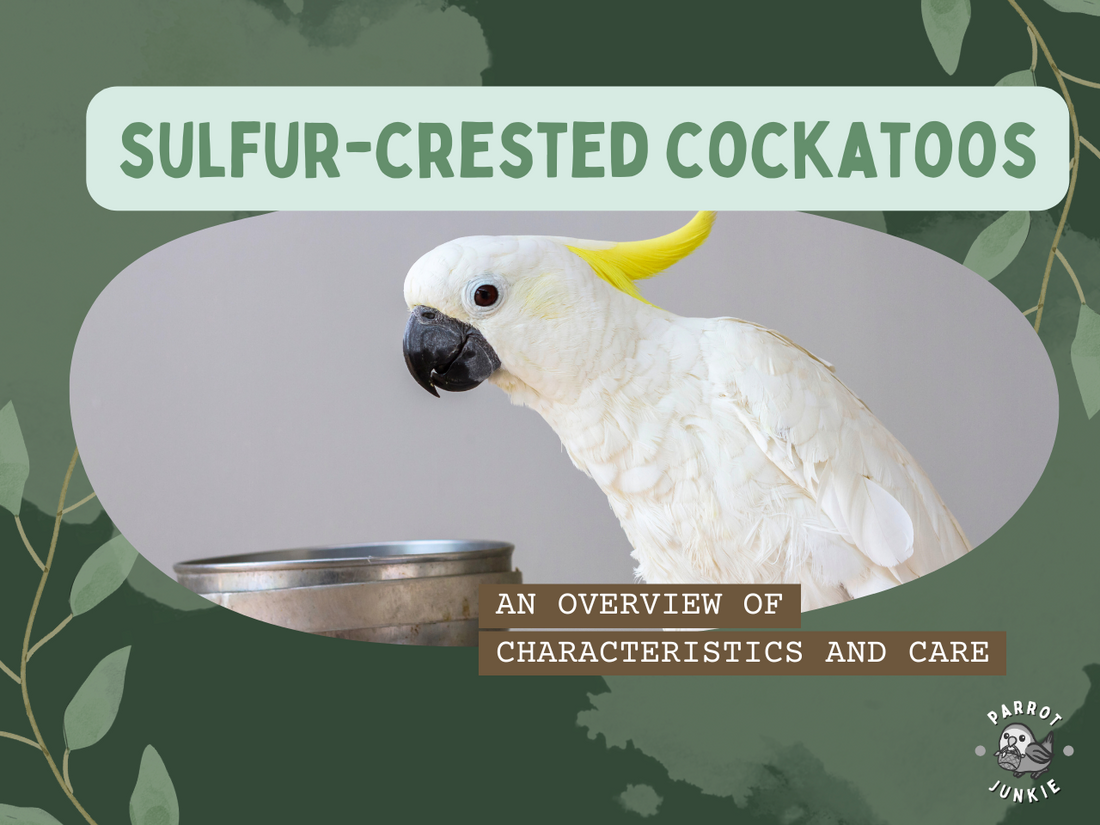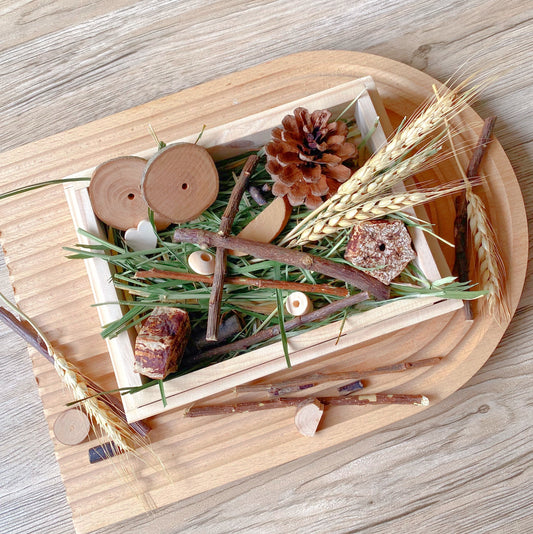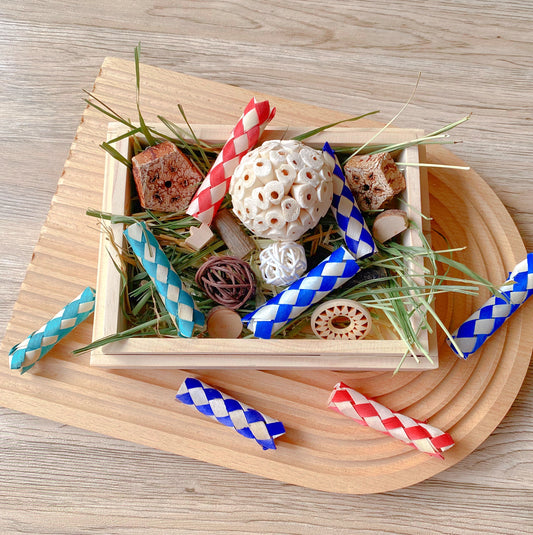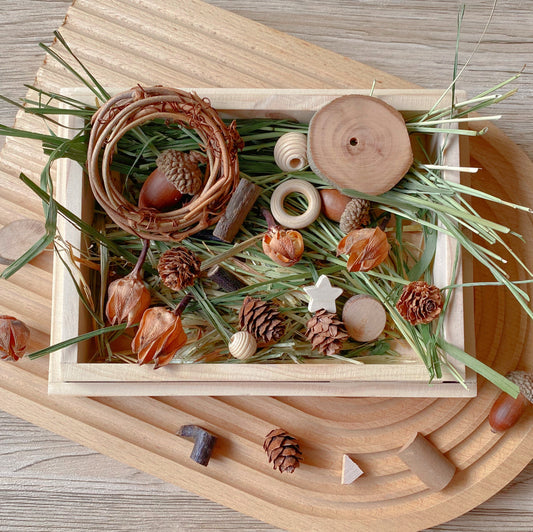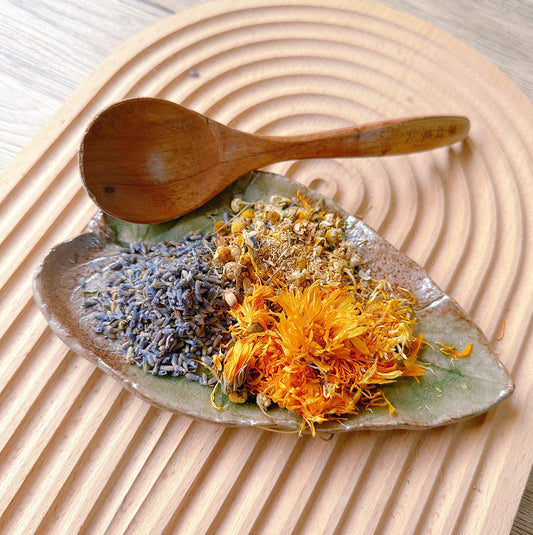Disclosure: As an Amazon Associate I earn from qualifying purchases. Some of the links below are affiliate links. This means that, at zero cost to you, I will earn an affiliate commission if you click through the link and finalize a purchase. Read more about this on this page.
The sulfur-crested cockatoo (spelt as 'sulphur' in British English), a bird as charismatic as it is striking, stands out in the avian world for its distinctive appearance and vibrant personality. Native to the wooded areas of Australia and surrounding islands, these cockatoos have captivated bird enthusiasts and pet owners alike. Known for their intelligence, playfulness, and loud calls, sulfur-crested cockatoos are more than just pets; they are companions with distinct personalities.
In this article, we will delve into the world of these magnificent birds, exploring their natural habitats, physical characteristics, behaviors, dietary needs, and much more. Whether you are a seasoned bird keeper or someone simply fascinated by these feathered wonders, this guide aims to provide a comprehensive understanding of sulfur-crested cockatoos, enhancing your appreciation for one of nature's most remarkable creations.
Jump To Section:
- Where Sulfur-crested Cockatoos Live In Nature
- Physical Characteristics of Sulfur-crested Cockatoos
- Sulfur-crested Cockatoos' Behavior and Personality
- Sulfur-crested Cockatoos' Dietary Requirements
- Housing and Environmental Needs of Sulfur-crested Cockatoos
- Socialization and Interaction with Sulfur-crested Cockatoos
- Sulfur-crested Cockatoos' Health and Lifespan
- Breeding and Reproduction
- Conclusion
Where Sulfur-crested Cockatoos Live In Nature
The sulfur-crested cockatoo is a bird of impressive adaptability, thriving in a variety of natural habitats. Primarily found in Australia, they are also native to New Guinea and some Indonesian islands. In Australia, their presence is significant in the eastern and northern parts of the country, including Tasmania. Some of them can even be found in parts of Singapore, but they are most likely introduced in the past or are escaped pets.
These cockatoos favor a range of environments from the lush rainforests to the edges of urban areas. In the wild, they are commonly seen in wooded areas, particularly in eucalyptus forests, which provide both food and nesting opportunities. They have also adapted well to human-altered landscapes, often seen in agricultural lands and suburban gardens, where they can become quite the local spectacle.
Their adaptability to different habitats is a testament to their resilience and intelligence, allowing them to find resources and thrive in various conditions. This aspect of their nature has been both a blessing and a challenge; while it helps them survive in changing environments, it has also led to conflicts in areas where they are considered pests due to their fondness for cultivated crops and gardens.
Despite these challenges, the sulfur-crested cockatoo remains an iconic symbol of the Australian wilderness, its raucous call and striking appearance a familiar sight and sound in its native lands.
Physical Characteristics of Sulfur-crested Cockatoos
The sulfur-crested cockatoo is renowned for its striking appearance, characterized by a vivid yellow crest and predominantly white plumage. This crest, the bird's most distinctive feature, can be raised or lowered depending on its mood and is often seen fanned out in displays of excitement or alarm.
An adult sulfur-crested cockatoo typically measures between 45 to 55 centimeters in length, making them one of the larger species in the cockatoo family. Their size is complemented by a robust and muscular build, with strong wings and a short, broad tail.
Their eyes are expressive and surrounded by a ring of bare skin, which is often blue-grey in color. The beak is black and powerful, capable of cracking hard nuts and seeds, which form a significant part of their diet. Interestingly, like many parrot species, sulfur-crested cockatoos exhibit zygodactyl feet – two toes facing forward and two backward – which aids them in climbing and handling food.
The plumage of these cockatoos is primarily white, with the exception of the yellow crest and the yellow wash under the wings. This coloration not only makes them visually appealing but also serves as a camouflage in their native habitat, especially among the eucalyptus trees.
The striking appearance of the sulfur-crested cockatoo, combined with its charismatic nature, makes it a popular subject in wildlife photography and a highly sought-after pet for bird enthusiasts.
Sexual Dimorphism in Sulfur-crested Cockatoos
Sexual dimorphism is subtle in this species, with males typically having darker brown eyes compared to the females' reddish-brown. However, this difference can be hard to discern, especially for the untrained eye.
Sulfur-crested Cockatoos vs Yellow-crested Cockatoos
In addition to sulfur-crested cockatoos, the avian world also features the closely related yellow-crested cockatoo. While both species boast a prominent yellow crest, there are notable differences that set them apart. The sulfur-crested cockatoo, known scientifically as Cacatua galerita, is larger in size and has a more extensive yellow crest compared to its cousin, the yellow-crested cockatoo (Cacatua sulphurea). The yellow-crested cockatoo, also referred to as the lesser sulfur-crested cockatoo, is smaller, with a more subdued yellow crest and often has a more reserved demeanor.
The sulfur-crested cockatoo typically measures between 45 to 55 centimeters in length with a wingspan of approximately 100 to 120 centimeters, showcasing its larger stature. In contrast, the yellow-crested cockatoo is smaller, usually measuring around 34 centimeters in length, with a wingspan that can reach up to 90 centimeters, reflecting its more compact build.
Physically, the yellow-crested cockatoo's plumage is a softer white, and the yellow coloring under its wings and tail is less vivid than that of the sulfur-crested species. Another distinguishing feature is the eye color; yellow-crested cockatoos typically have darker eyes compared to the sulfur-crested variety. These differences, though subtle, are significant for bird enthusiasts and ornithologists in identifying and studying these distinct yet closely related species.
Sulfur-crested Cockatoos' Behavior and Personality
Sulfur-crested cockatoos are renowned for their dynamic and engaging personalities. These birds are highly social and intelligent, traits that make them both fascinating and challenging pets. In the wild, they are often seen in flocks, which can range from small groups to large gatherings of hundreds of birds, especially during roosting or when food is abundant.
One of the most striking behavioral traits of sulfur-crested cockatoos is their vocalization. They are known for their loud and piercing calls, which serve as communication within their flocks and can be heard over long distances. These calls play a crucial role in their social structure and territorial behavior.
These cockatoos are also known for their playful nature. They often indulge in playful activities like swinging from branches, mimicking sounds, and manipulating objects with their beaks and feet. In a domestic setting, this playfulness requires engagement through toys and interaction with their human companions to keep them mentally stimulated. Below is a video showing how cheeky sulfurs can be!
Their intelligence is another significant aspect of their behavior. Sulfur-crested cockatoos are capable of learning a variety of tricks and can mimic human speech to some extent. This intelligence, however, also means they require mental stimulation to prevent boredom, which can lead to destructive behaviors if not properly managed.
Furthermore, these birds form strong bonds with their flock members or human caretakers. They can be affectionate and seek attention, but this also means they can develop behavioral issues if they feel neglected or isolated. Proper socialization and regular interaction are vital for their emotional well-being.
In summary, the behavior and personality of sulfur-crested cockatoos are as vibrant and dynamic as their physical appearance. Their social nature, intelligence, and playfulness make them captivating companions, but also underscore the need for dedicated care and attention.
Sulfur-crested Cockatoos' Dietary Requirements
The diet of sulfur-crested cockatoos in the wild is diverse, primarily consisting of seeds, nuts, fruits, and sometimes insects and their larvae. This variety is crucial for their nutritional balance, providing the necessary vitamins, minerals, and other nutrients.
In captivity, it's important to mimic this natural diet as closely as possible to ensure the cockatoos' health and well-being. A balanced diet for a pet sulfur-crested cockatoo should include:
- Pelleted Diets: These are specially formulated to provide a balanced range of nutrients and should form the basis of their diet.
- Seeds and Nuts: While enjoyed by cockatoos, seeds and nuts should be given in moderation due to their high-fat content. It's advisable to offer a variety of seeds and to occasionally include nuts as a treat.
- Fruits and Vegetables: Safe and fresh fruits and vegetables are essential for providing vitamins and minerals. Items like apples, carrots, and leafy greens are beneficial, but avocado should be avoided as it's toxic to birds.
- Supplements: Depending on the specific dietary needs of the bird, vitamin and mineral supplements might be necessary, especially if the bird's diet lacks variety.
- It's also important to ensure that sulfur-crested cockatoos have access to clean, fresh water at all times.
Alongside the right food, proper feeding habits are crucial. Overfeeding can lead to obesity, while underfeeding can result in malnutrition. Monitoring the bird's weight and adjusting its diet accordingly is a key part of responsible cockatoo care.
Lastly, dietary needs can vary based on age, health, and activity level. Consulting with a veterinarian specializing in birds is recommended to tailor the diet to the individual bird's needs.
Housing and Environmental Needs
As sulfur-crested cockatoos are highly active and curious pets, getting a suitable housing environment for them is essential to ensure their well-being.
Cage Size and Setup
The cage for a sulfur-crested cockatoo should be as spacious as possible. Considering their size and activity level, a cage size of 2 feet (60cm) deep, 3 feet (90cm) wide, and 4 feet (120cm) tall is the absolute minimum. However, larger is always better to provide ample space for movement and wing-flapping. The cage should be made of sturdy material such as stainless steel, with bar spacing no more than 1 inch (2.5cm) apart to prevent escape or injury. In the cage, include perches of varying diameters to promote foot health, and ensure there's enough space for toys without overcrowding the cage.
Toys and Mental Stimulation
These curious and smart birds require mental stimulation to stay healthy and happy. Providing a variety of toys is essential, such as chewable wood toys, puzzles, and foraging toys to keep them engaged. Regularly rotate the toys to maintain their interest. Interaction with their human companions is also crucial for mental stimulation.
Light and Temperature
Sulfur-crested cockatoos need exposure to natural light or full-spectrum artificial light to synthesize vitamin D and maintain a healthy circadian rhythm. The cage should be placed in a well-lit area but not in direct sunlight. Maintaining a stable and comfortable temperature is also important. They thrive in temperatures ranging from 65 to 80 degrees Fahrenheit but can tolerate slight variations.
Environmental Safety
The environment should be safe and free from hazards. Keep the cage away from drafty windows, kitchens (to avoid fumes from non-stick cookware, which can be toxic to birds), and other pets that might stress the bird. Also, ensure that all items in and around the cage are non-toxic and bird-safe.
Air Quality and Dust Management
An important aspect of caring for sulfur-crested cockatoos is managing the dust they produce. These birds have a unique type of feather known as 'powder down,' which disintegrates into fine dust to help clean and waterproof their feathers. While this is a natural and healthy process for the bird, it can lead to a buildup of dust in the home, especially in enclosed indoor spaces. This dust can potentially affect both the bird's respiratory health and that of their human caregivers and other pets.
To mitigate this, using a non-ionizing air purifier in the room where the bird is housed is highly recommended. This helps to maintain good air quality by reducing the amount of feather dust and dander in the environment. Daily cleaning of the cage and the surrounding area is also essential to keep the dust accumulation to a minimum.
Socialization and Interaction with Sulfur-crested Cockatoos
Socialization and interaction are key components in the life and well-being of sulfur-crested cockatoos. These birds are highly sociable and thrive on interaction, both with their human companions and, if possible, with other birds.
Importance of Socialization: Sulfur-crested cockatoos have a deep-rooted need for social engagement. Lack of interaction can lead to a range of behavioral problems, including aggression, excessive noise, and feather plucking. Regular, meaningful interaction helps to keep these intelligent birds mentally stimulated and emotionally satisfied.
Forms of Interaction: Interaction can take many forms. It includes direct engagement such as talking, singing, and playing games, as well as training sessions which can be both fun and mentally stimulating for the bird. Training sessions utilizing positive reinforcement can also strengthen the bond between the cockatoo and its owner.
Other Birds and Socialization: In some cases, having another bird as a companion can be beneficial, especially for owners who are unable to devote large amounts of time daily. However, careful introduction and monitoring are necessary, as cockatoos can be territorial or aggressive to new birds. It is never a guarantee that a new bird will get along well with your current bird, and owners need to be prepared to house them separately and devote additional time to ensure the well-being of both birds.
Handling and Touch: Sulfur-crested cockatoos often enjoy physical contact, such as gentle petting or scratching. However, it's important to understand and respect each bird's individual preferences and boundaries regarding touch.
Environmental Enrichment: In addition to direct interaction, environmental enrichment plays a significant role in their socialization. This includes having a variety of toys, perches, and perhaps a safely secured area outside the cage where the bird can explore and play under supervision.
Routine and Consistency: Consistency in interaction and routine is vital. These cockatoos are creatures of habit and appreciate a consistent schedule, which helps them feel secure and loved.
Effective socialization and interaction are vital for the psychological health of sulfur-crested cockatoos. A well-socialized cockatoo is typically more content, active, and less prone to behavioral issues, making for a more rewarding and enriching relationship between the bird and its caretaker.
Sulfur-crested Cockatoos' Health and Lifespan
Breeding sulfur-crested cockatoos is a significant undertaking that requires a deep understanding of their needs and behaviors. In the wild, these birds typically breed during the spring and summer months, but in captivity, they may breed year-round if the conditions are right.
Breeding Age and Pair Bonding: Sulfur-crested cockatoos reach sexual maturity between 3 to 4 years of age. They often form strong pair bonds, which can last a lifetime. Choosing compatible pairs is crucial for successful breeding, as these birds can be selective about their mates.
Nesting Requirements: In the wild, sulfur-crested cockatoos nest in tree hollows. In captivity, providing a suitable nesting box is essential. The box should be large enough to accommodate the bird comfortably and placed in a quiet, secure location to encourage breeding behavior.
Egg Laying and Incubation: A female sulfur-crested cockatoo typically lays 2 to 3 eggs per clutch. The eggs are incubated for about 30 days, primarily by the female, while the male provides food. It's important to minimize stress and disturbance during this period.
Chick Rearing: Once hatched, both parents usually take part in feeding the chicks. The chicks are altricial, meaning they are born relatively underdeveloped and require significant parental care. They typically fledge at about 9 to 12 weeks of age.
Responsible Breeding Practices: It's important to engage in responsible breeding practices, considering the birds' welfare and the commitment required to care for the offspring. Overbreeding can lead to health issues for the female and contribute to the overpopulation of captive birds.
Legal Considerations: Additionally, potential breeders should be aware of and comply with any local regulations or laws regarding the breeding and selling of parrots.
Breeding sulfur-crested cockatoos can be rewarding but demands a high level of commitment, expertise, and resources to ensure the health and well-being of both the parents and the offspring.
Breeding and Reproduction of Sulfur-crested Cockatoos
Breeding sulfur-crested cockatoos is a significant undertaking that requires a deep understanding of their needs and behaviors. In the wild, these birds typically breed during the spring and summer months, but in captivity, they may breed year-round if the conditions are right.
Breeding Age and Pair Bonding: Sulfur-crested cockatoos reach sexual maturity between 3 to 4 years of age. They often form strong pair bonds, which can last a lifetime. Choosing compatible pairs is crucial for successful breeding, as these birds can be selective about their mates.
Nesting Requirements: In the wild, sulfur-crested cockatoos nest in tree hollows. In captivity, providing a suitable nesting box is essential. The box should be large enough to accommodate the bird comfortably and placed in a quiet, secure location to encourage breeding behavior.
Egg Laying and Incubation: A female sulfur-crested cockatoo typically lays 2 to 3 eggs per clutch. The eggs are incubated for about 30 days, primarily by the female, while the male provides food. It's important to minimize stress and disturbance during this period.
Chick Rearing: Once hatched, both parents usually take part in feeding the chicks. The chicks are altricial, meaning they are born relatively underdeveloped and require significant parental care. They typically fledge at about 9 to 12 weeks of age.
Responsible Breeding Practices: It's important to engage in responsible breeding practices, considering the birds' welfare and the commitment required to care for the offspring. Overbreeding can lead to health issues for the female and contribute to the overpopulation of captive birds.
Legal Considerations: Additionally, potential breeders should be aware of and comply with any local regulations or laws regarding the breeding and selling of parrots.
Breeding sulfur-crested cockatoos can be rewarding but demands a high level of commitment, expertise, and resources to ensure the health and well-being of both the parents and the offspring.
Conclusion
The sulfur-crested cockatoo is a remarkable and captivating bird, known for its striking appearance, intelligence, and vibrant personality. Throughout this guide, we have explored the various aspects of caring for these magnificent creatures, from understanding their natural habitats and dietary needs to addressing their socialization and housing requirements.
Owning a sulfur-crested cockatoo is not just a hobby; it's a long-term commitment that spans decades. These birds require dedicated care, mental stimulation, and regular social interaction to thrive. Prospective and current owners must be prepared for the responsibilities that come with keeping such a complex and intelligent bird.
For those willing to invest the time and effort, the rewards are immense. Sulfur-crested cockatoos can form deep, affectionate bonds with their caretakers, providing companionship and joy that is truly unmatched. However, it's also essential to acknowledge the challenges, particularly the potential for behavioral issues if their complex needs are not met.
In summary, the sulfur-crested cockatoo is a symbol of nature's beauty and complexity. By understanding and respecting their needs, we can ensure these magnificent birds live fulfilling and healthy lives, both in the wild and in our homes.

